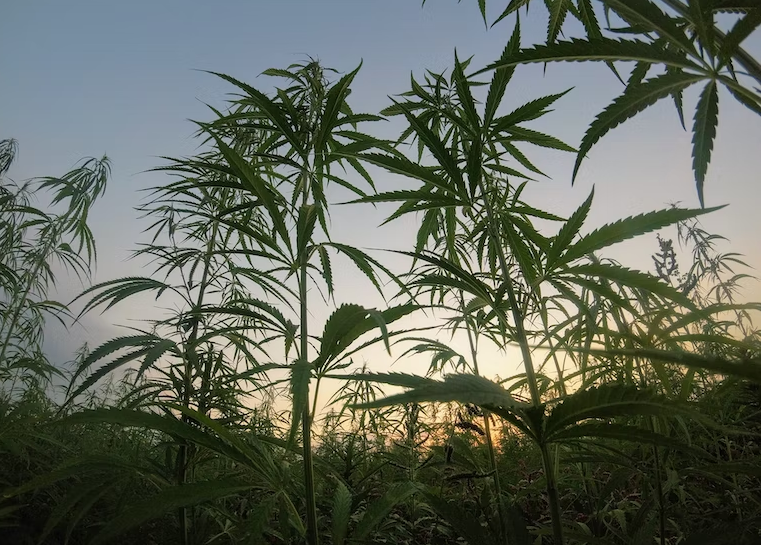Recreational and medicinal cannabis use has been decriminalized in recent years in the US, with more than 50 states legalizing this plant. Despite its growing popularity and uses, much still needs to be learned about cannabis farming and its effects on the environment.
However, this doesn’t mean that nothing is known. On the contrary, a recent study has shown the world the effects cannabis farming is having and how some of these negative outcomes can be negated. In our article, we will briefly touch on some of the ways cannabis affects the environment and what still needs to be uncovered.
What Does Science Tell Us About What Cannabis Farming Is Doing To The Environment, And What Still Needs To Be Learned?
Limited peer-reviewed studies indicate what cannabis cultivation is doing to the environment. Although it’s evident that more studies need to be conducted to better understand the effects of cannabis farming on the environment, some findings should be noted.
See below to learn more about what science does and doesn’t tell us about cannabis cultivation, according to recent studies’ findings.[1]
1- Pesticide Use
According to scientific findings, it’s estimated that 5.6 billion pounds of pesticides are globally used annually for agricultural cultivation purposes. [2] Throughout the world, pesticide use is known to damage aquatic and land ecosystems alongside creating adverse human health effects. Unfortunately, no quantitive studies have been conducted to determine pesticide use in private and legal cannabis cultivation and the impacts this has on the environment.
Yet, it is presumed that undocumented pesticide use in cannabis cultivation is causing harm. Globally there is scarcely anything being done to prevent pesticide use in cannabis farming and, therefore, environmental harm.
However, it should be noted that Canada is one of the few countries that has set pesticide use regulations in cannabis cultivation. The state of California in the US is also known for having some of the strictest pesticide regulations in the world. [3]
In addition, there aren’t national or international standardized protocols regarding pesticide testing in cannabis products. Since there is very little knowledge, more and more people are speaking out against pesticide use in cannabis cultivation or for stricter regulations.
2- Land Cover Change
It’s estimated that global agricultural land use is 5 billion hectares, about 38% of the global land surface of the earth. [4] Since agricultural expansion is one of the main causes of carbon dioxide emissions, forest clearing, and biodiversity loss, it is unsurprising that cannabis farming is now contributing to these problems.
Despite cannabis cultivation expansion believed to remain small when compared to other crops, it will have an impact. For example, currently, in California, there is an estimated 460 hectares of permitted land for cannabis cultivation.
Where cannabis farming occurs, problems arise, according to some studies. [4] There is proof that cannabis farming for commercial production in various remote locations leads to stream modifications, landslides, forest fragmentation, and soil erosion.
3- Water Use
As with other crops, cannabis plants use the most water during the growing season. It’s been estimated that a single plant requires 5.8 gallons of water per day. [5]
Unfortunately, there isn’t much knowledge about how water sources are affected by cannabis farming. Yet, data from California indicates that cannabis farming is causing significant problems. For example, without proper water usage regulations, cannabis irrigation could worsen water stresses in drought-prone regions.
Additionally, it’s estimated that the water demands of cannabis cultivation have often exceeded the amount of water flowing in a river during the low period. This leaves very little water to sustain aquatic life. Moreover, another significant problem associated with water use and cannabis farming is ‘trespass growers.’ These growers operate without a permit in national forests and tribal lands.
Its believed that water is often diverted from streams by trespass growers to irrigate acres of cannabis plants. In many instances, trespass growers are situated near headwaters, which has significant downstream effects.
For example, streams in Mendocino, California, often run dry in the Summer months because of cannabis growers diverting water. This has led to the decimation of steelhead trout and Coho salmon in the past. [6]
3- Water Pollution
Even though there are no significant peer review studies surrounding groundwater pollution from the cannabis industry, cannabis cultivation still likely poses a risk to water sources. [7] Additionally, there is proof that the consumption of cannabis harms water quality in urban areas.
Some studies have found concentrations of 11-hydroxy-THC and carboxy-THC in drinking water and wastewater that are presumed to originate from human consumption. [8] Ultimately, it’s been established that cannabinoids have been found in surface waters, raw sewerage, and biologically treated municipal waters in many major cities in countries like Colombia, the US, and Costa Rica.
References
1- Wartenberg AC, Holden PA, Bodwitch H, et al. Cannabis and the environment: what science tells us and what we still need to know. Environ Sci Technol Lett. 2021;8(2):98-107. https://pubs.acs.org/doi/10.1021/acs.estlett.0c00844. [Journal Impact Factor = 7.653], [Times Cited = 17]
2- Seltenrich N. Into the weeds: Regulating pesticides in cannabis. Environmental health perspectives. https://www.ncbi.nlm.nih.gov/pmc/articles/PMC6785225/. Published April 2019. [Journal Impact Factor = 9.03], [Times Cited = 33]
3- Wang IJ, Brenner JC, Butsic V. Cannabis, an emerging agricultural crop, leads to deforestation and fragmentation. Front Ecol Environ. 2017;15(9):495-501. https://esajournals.onlinelibrary.wiley.com/doi/10.1002/fee.1634 [Journal Impact Factor = 11.12], [Times Cited = 24]
5- https://daily.jstor.org/the-environmental-downside-of-cannabis-cultivation/
7- Carah JK, Howard JK, Thompson SE, et al. High time for conservation: adding the environment to the debate on marijuana liberalization. Bioscience. 2015;65(8):822-829. https://pubmed.ncbi.nlm.nih.gov/26955083/ [Journal Impact Factor = 8.589], [Times Cited = 81]
8- Apul OG, Rowles LS, Khalid A, Karanfil T, Richardson SD, Saleh NB. Transformation potential of cannabinoids during their passage through engineered water treatment systems: A perspective. Environ Int. 2020;137:105586. https://pubmed.ncbi.nlm.nih.gov/32086082/ [Journal Impact Factor = 9.621], [Times Cited = 7]
Unsplash/Matteo Paganelli








